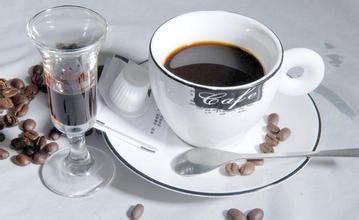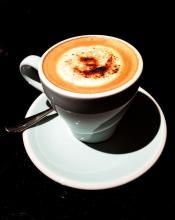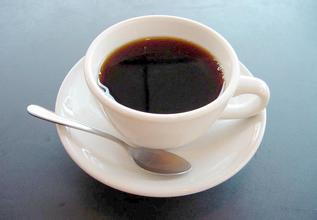How does espresso coffee taste?
Introduction to the layered practice of espresso
Espresso (Espresso) or espresso is a type of coffee with a strong taste by brewing coffee with extremely hot but non-boiling hot water under high pressure and grinding it into a very fine coffee powder. It was invented and developed in Italy and began in the early 20th century, but until the mid-1940s, it was a drink made separately through vapor pressure. After the invention and successful commercialization of the Spring Lever (spring piston lever) coffee machine, espresso was transformed into a drink known today. The pressure used in the production process is often 9 to 10 atmospheric pressure or bar pressure.
By definition, espresso has a thicker texture than dripping coffee and contains more dissolved matter per unit volume than dripping coffee; supply is usually calculated in terms of "shot". Espresso is chemically complex and changeable, many of which decompose due to oxidation or a drop in temperature. A feature of properly brewed espresso is the presence of coffee fat (crema), a reddish-brown foam that floats on the surface of espresso. It consists of vegetable oils, proteins and sugars. Coffee fat has the combination of emulsion and foam colloid.
Through the short-time and high-pressure brewing process, the unique flavor of a cup of coffee is stronger than other brewing equipment after being concentrated. However, there is less caffeine because of the short quenching time. Espresso is often used as the basis for coffee drinks mixed with other ingredients (such as milk or cocoa), such as lattes, cappuccinos, macchiato and mocha, without over-diluting the coffee.
The exact definition given in the Dr.Andrew llly book is:
Italian espresso (Espresso) is a small cup of coffee that uses excellent coffee beans to add hot water and uses steam pressure to instantly extract the coffee liquid.
The production parameters are:
Coffee ratio 6.5 ±1.5g
Water temperature 90 ±50C
Water pressure 9 ±2 bar
Time 30 ±5 seconds

Important Notice :
前街咖啡 FrontStreet Coffee has moved to new addredd:
FrontStreet Coffee Address: 315,Donghua East Road,GuangZhou
Tel:020 38364473
- Prev

Italian latte cappuccino mocha-the standard espresso cup has a capacity of multiple milliliters
Italian latte cappuccino mocha-the standard espresso cup has a multi-milliliter capacity in the face of a dazzling variety of cups on the market, we often don't know how to start. What's the difference between coffee cups and other cups? Which cup should I use to drink what kind of coffee? When buying cups, most people are often unable to correctly distinguish the difference between coffee cups and black tea cups. Usually the red teacup is used for
- Next

What size coffee cup does cappuccino normally use? how big is the pull flower coffee cup?
What size coffee cup does cappuccino normally use-what size is the right cappuccino coffee? it tastes good, but its origin is more knowledgeable, and it has always been the best material for studying character changes in Europe and the United States. The history of the word Cappuccino is enough to show that a word is often extended to another word meaning cappuccino coffee because it looks like something.
Related
- Beginners will see the "Coffee pull flower" guide!
- What is the difference between ice blog purified milk and ordinary milk coffee?
- Why is the Philippines the largest producer of crops in Liberia?
- For coffee extraction, should the fine powder be retained?
- How does extracted espresso fill pressed powder? How much strength does it take to press the powder?
- How to make jasmine cold extract coffee? Is the jasmine + latte good?
- Will this little toy really make the coffee taste better? How does Lily Drip affect coffee extraction?
- Will the action of slapping the filter cup also affect coffee extraction?
- What's the difference between powder-to-water ratio and powder-to-liquid ratio?
- What is the Ethiopian local species? What does it have to do with Heirloom native species?

